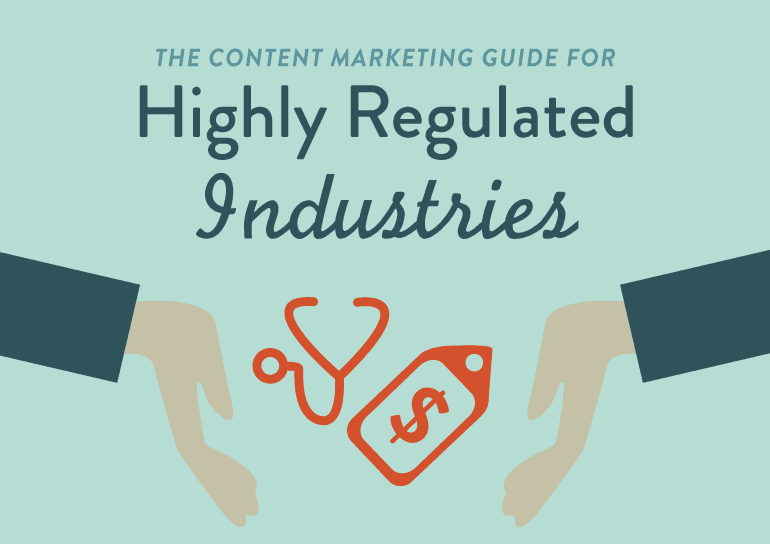The Content Marketing Guide For Highly Regulated Industries

Say you work for an ad agency and one of your clients is an e-retailer that sells over 30,000 products. It should be a dream come true for a content marketer, right? With 30,000 options, you have a nearly endless supply of features and benefits, challenges and solutions, lifestyles and demographics to target.
A Must Read: The Content Marketing Guide For Highly Regulated Industries via @CoSchedule
Click To TweetNow, let’s pretend that for all of those 30,000 products, you can’t actually tell anyone what they’re good for. Instead, all you can do is list out the ingredients and cross your fingers that your customers can figure it out for themselves.
This is the reality the nutraceutical industry lives in, the world of content marketing in a highly regulated industry. And they aren’t alone.
There are several industries you may end up working with that face tough challenges when it comes to how they can market their products to consumers:
Alcohol & Spirits “Digital marketing communications should be placed only in media where at least 71.6% of the audience is reasonably expected to be of the legal purchase age,” according to discus.org, the national trade association for distilled spirits in the US. So… beware not only what you say, but where you say it.
Healthcare providers Prior to “Bates v. State Bar of Arizona” in 1977, hospitals and healthcare providers essentially didn’t do any marketing at all. Now that they do, they “risk their reputation, their license and their livelihood if their marketing efforts run afoul of the maze of local, state or federal laws and regulations.” healthcaresuccess.com
Pharmaceutical companies There are so many potential pitfalls here that “Every major company … has either settled recent government cases, under the False Claims Act, … or is currently under investigation for possible health care fraud,” according to the Wikipedia entry on pharmaceutical marketing
The marketing rules and guidelines will vary industry to industry. But when you’re limited in what you can say, where you can say it and to whom you can say it, the driving question is the same for all...
What’s A Product Without Benefits?
“One of the most repeated rules of writing compelling copy is to stress benefits, not features,” writes Brian Clark of Copyblogger. “In other words, identify the underlying benefit that each feature of a product or service provides to the prospect, because that’s what will prompt the purchase. This is one rule that always applies, except when it doesn’t.”
Our friends at the nutracuetical company fall into that “except when it doesn’t” category. They know the underlying benefit of taking extra vitamin C is reducing the duration of the common cold, but they can’t say that due to the regulations in place for their industry.
Ad agencies that work with pharmaceutical companies face a similar content challenge. They get to promote their products’ benefits, but they’re also required to rattle off all the potential side-effects (which often exceed the list of benefits). It’s that whole truth in advertising thing.
If you’re a distiller of fine spirits, the “What’s a product without benefits?” question directly applies, as the implied benefit of pouring a glass of Scotch is to take the edge off, relax and alter your mood. At their core, these are implied health claims, which are off limits. And in most cases, the standard closing of “always drink responsibly” seems to directly compete with the fun-loving message from the rest of the ad.
So with all these rules and roadblocks, what should content marketers do in a heavily regulated industry? Well… you must get creative. And study up.
3 Content Marketing Tips For Highly Regulated Industries
3 Amazing Content Marketing Tips for the Regulatory Challenged (Highly Regulated Industries)
Click To Tweet#1 – Market the lifestyle (and everything they’ll need to live that lifestyle).
One of the greatest examples of lifestyle marketing is Red Bull. Despite poor taste test ratings and the fact that the entire recipe is listed on the side of the can, the company enjoys a whopping 70-90% market share in over 100 countries around the world.
How’d they do it? According to their founder, Dietrich Mateschitz, “We don’t bring the product to the consumer, we bring consumers to the product.” The company has created and cultivated a lifestyle around their product. They sponsor extreme sports competitions and athletes and organize events that draw massive followings.

Red Bull has successfully positioned itself as being where the action is. Where the party starts. Where the daredevils go. If you drink Red Bull, you live an extreme(ly awesome) lifestyle…or so they passionately let us believe.
But do you know how many calories are in a can of Red Bull, or how much caffeine and taurine are in there? Of course not, and neither do I. Those energizing “benefits” of the actual product aren’t the focus of their marketing. They’re not selling energy or caffeine. They’re selling the lifestyle. And it looks fun as hell... hence the $1.6 billion market share.
So, how can you tap into the lifestyle marketing potential for yourself?
If you’re working with an existing brand, seek out their most loyal and vocal customers and listen. Listen to what they’re saying on social media. Watch how they interact with their circle of influence. You can even track the types of websites they visit by looking at your retargeting placements. These all provide insights into what other content is important to that brand’s customers, which can help you understand what kind of lifestyle they lead…but more importantly, what kind of lifestyle they want to lead. From there, make it happen for them.
If you’re working with a new brand with a minimal fan base, you have the opportunity to define the lifestyle you want the brand to portray. You can follow the above advice for listening to current readers, fans, customers, but you can also try to apply some of those strategies to competitors’ readers, fans and customers. Keep your friends close and your enemies closer, right?
#2 – Capitalize on the best-selling, most popular or otherwise trendiest product.
What’s the saying… working hard or hardly working? It makes a lot of sense in the marketing world if you think about it in terms of resource allocation.
Let’s go back to the example of the nutraceutical company with 30,000 products. If they have a product with consistent 5-star ratings, significant social buzz, high margin and a proven sales record, why would they not direct more time and energy into optimizing a marketing strategy around that single product?
It’d be hard to justify spending equal time and effort on all 30,000 products when you know—based on sales data and social analytics—that you’ve got one product that not only sells, but also generates the kind of social engagement that leads to new customer acquisition.
Give your best-selling products the attention they deserve, and craft shareable pieces of content around it… even if the regulations prohibit you from delving too far into the details. Write more blog posts, shoot more videos, send more emails with that product top, front and center. Doing so increases the odds that current fans (who already love the product) will share your content with their circles and talk up the benefits for you—successfully communicating those benefits while keeping you fully compliant.
People run in circles of shared interests. By making your hottest product the star of your marketing show, you’re giving your customers what they want… but, more importantly, you’ll be giving their friends what they want, too.
Don’t make the mistake of democratizing your marketing plan. If you hit a homerun with a hot product—or strategy—keep swinging. It’s a homerun derby, and the grand prize is new customer acquisition. Then, when you’ve got them in the door, your automated marketing and nurture campaigns can take over.
#3 – Become an expert not only on your product/service, but also on the regulations themselves.
I’m not a financial expert, but if I had to oversimplify the economic collapse of 2008 I would point the finger of blame at one thing: loopholes. The giant financial institutions on Wall Street employed actual experts to master the regulatory laws… and find the loopholes.You and your marketing team can do the same thing, but with far more noble intentions. Even the strictest, most thorough and well-written regulations will have a loophole or two that you can exploit in the name of honest marketing.
And as Lisa Cannon points out, it’s going to be tempting to just give all this homework to one person (or your legal team if you’re lucky enough to have one). Don’t do it. You’re the marketer. You’re the one crafting the message for the brand. You need to be an expert on the brand’s product/service, so must you be an expert on the rules governing their specific industry. You also don’t want to be stuck clueless in the event that one person is out of the office or leaves the company.
Cannon goes on to say you also need to be diligent in staying up to date with the inevitable changes to the regulations. “Subscribe to regular updates from the regulatory agencies that relate to your industry via email, RSS feed or Google alerts,” she says. “Find sources of information like Regulatory News for Finance on Reuters, Information Week’s Healthcare news and analysis or The New York Times features on Regulation and Deregulation.”
It could even be as easy as setting up a few Google alerts for keywords in the industries you in which you regularly work. Regardless of your strategy, become the expert, find the loopholes and stay current.
You’re In a Creative Field for a Reason…
So get creative!
I admit the tone of this post skews slightly negative. But if you step back and view it from a distance, the challenge is really nothing more than one of creativity.
Let yourself—and your team—get creative and stay positive. There will always be a way to get your message out that doesn’t cross the legal/regulatory line.


